Portuguese podengos may come in three sizes (grande, medio, pequeno) and sport two coats, but their purpose throughout history has been singular: hunting.
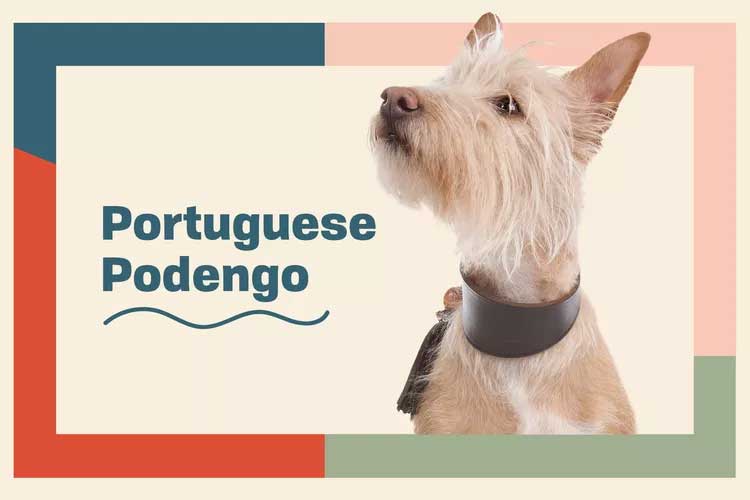
Portuguese Podengo Overview
| OFFICIAL NAME | Portuguese Podengo |
| COMMON NAME | Portuguese Podengo |
| PET HEIGHT | 8 to 28 inches |
| PET WEIGHT | 9 to 66 pounds |
| LIFESPAN | 10 to 15 years |
| GOOD WITH | children, dogs, families |
| TEMPERAMENT | aloof, playful |
| INTELLIGENCE | high |
| SHEDDING AMOUNT | normal |
| EXERCISE NEEDS | high |
| ENERGY LEVEL | active |
| VOCAL LEVEL | when necessary |
| DROOL AMOUNT | low |
| BREED GROUP | none |
| BREED SIZE | medium (26-60 lbs.) |
| COAT LENGTH | short, wiry |
| COLORS | fawn, gold / yellow, gray, red, white |
| PATTERNS | bicolor |
| OTHER TRAITS | easy to groom, good hiking companion, high prey drive, strong loyalty tendencies |
Discussing the Portuguese podengo can sound a bit like placing an order at Starbucks. That's because this National Dog of Portugal comes in three different, aptly named sizes—pequeno (peh-KEN-oo), medio (MEH-dee-you), and grande (grond, with a rolled "r")—with a difference of 60 pounds between the smallest and the largest of the breed. And if that isn't enough variety for you, the podengo's coat can be either smooth or wiry.
All podengos great and small (and in between) are generally lively and loving dogs with large appetites for play. And as sight and scent hounds with a long history of hunting rabbits, stags, and wild boars, these alert, agile pups have also gained a reputation for their wits.
Purebred podengos didn't set paw on U.S. soil until the 1990s, and the breed remains relatively rare. But their low numbers aren't a reflection of their merits. With their rustic good looks, hardy spirit, and fun-loving demeanor, we predict the hunter will soon become the hunted.
Appearance
When it comes to the Portuguese podengo, size matters—at least where naming is concerned.Podengo pequenos are 8–12 inches in height and weigh between 9–13 pounds.
Podengo medios measure between 16–22 inches tall and tip the scales at 35–44 pounds.
Podengo grandes are 22–28 inches in height and weigh between 44–66 pounds.
To put this wide range into perspective, the smallest podengos weigh about as much as a gallon of milk and are under 1 foot high, while the largest podengos are over 2 feet tall and weigh as much as a preteen boy. If variety is the spice of life, the Portuguese podengo is one spicy breed!
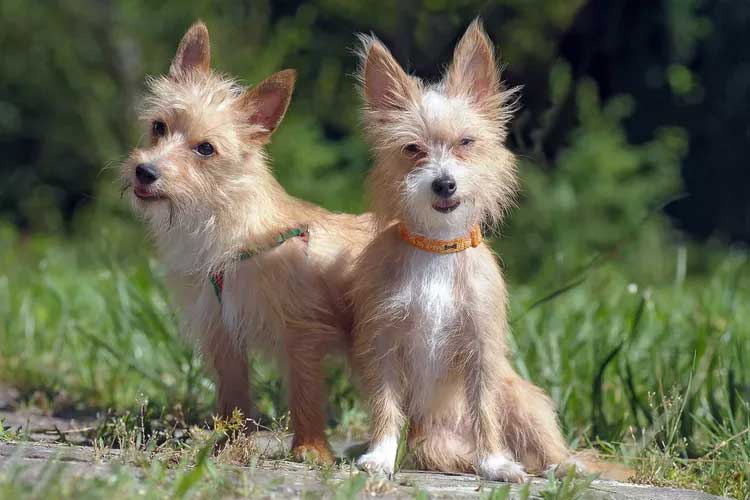
Putting aside our scales and tape measures, all podengos have characteristic wedge-shaped heads (like a four-sided pyramid) with expressive, almond-shaped eyes and erect, triangular ears. These ears are known for being highly mobile, folding this way and that to reflect the podengo's mood or interest.
These lean, agile dogs can be either smooth- or wire-coated. The former have short, dense fur, and the latter have long, rough hair and beards on their muzzles. The podengo's coat in its natural state is a source of pride, which is why excessive clipping sculpting in show dogs can result in being disqualified from competition. Their characteristically rustic fur—whether smooth or rough, short or long—comes in an array of colors, including:
All shades of yellow or fawn (either solid or with white markings)
White with yellow or fawn markings
Black or shades of brown/red (solid or with white markings)
White with black or brown markings
The podengo's au naturale fur isn't just easy on the eyes—it's relatively easy on the upkeep, as well. While wirehaired dogs need regular brushing to keep shedding at bay, those with smooth coats need only an occasional brushing. Add in the occasional bath to either coat, and your pup is set.
Temperament
There's a famous architectural principle that says form should follow function. In other words, a building should be designed for how it will be used. The same could certainly be said of not only the podengo's appearance but of his temperament as well. These dogs were built for hunting, both physically and mentally.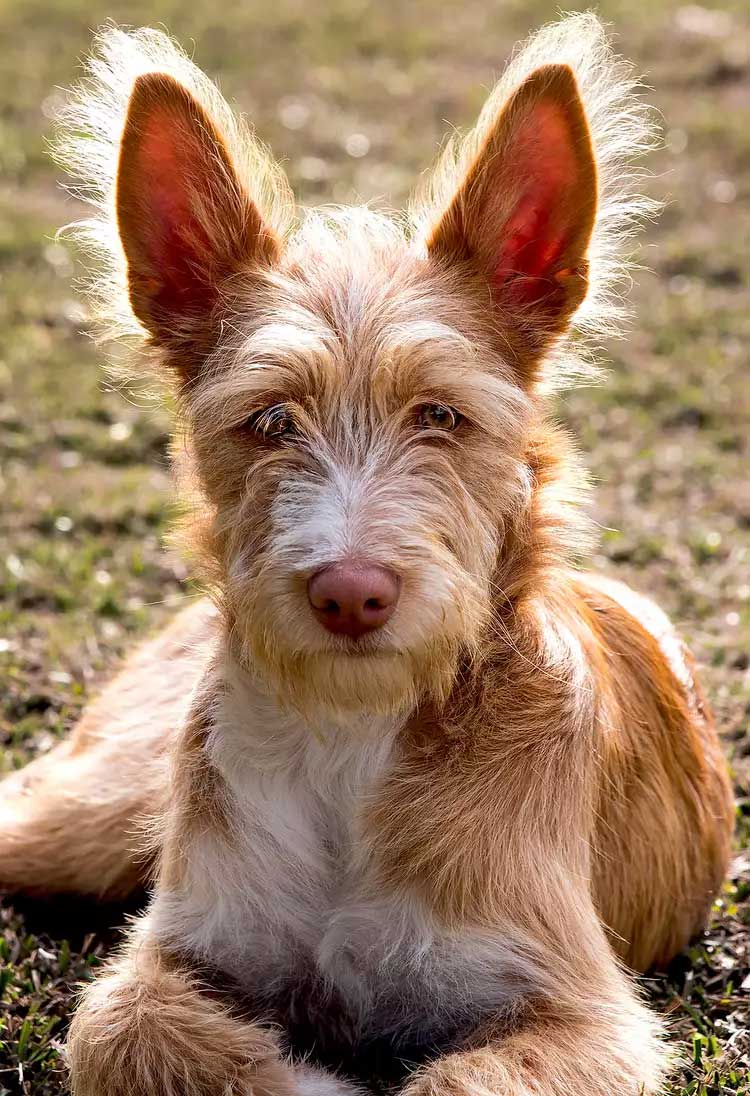
So what traits make for a prime hunting dog? In addition to their impressive scent, vision, and hearing abilities, the Portuguese podengo is prized for being alert, brave, and intelligent. They are able to work alone but can also hunt in packs and are quick learners.
When they aren't working, podengos can be loyal, affectionate companions. But while he adores his family, the Portuguese podengo can be wary around strangers and will bark to let you know when anyone unfamiliar approaches.
Living Needs
No matter their size, Portuguese podengos are active dogs. They prefer running laps to sitting on laps, so it's important to give these dogs space and something to do. They do well in homes with active families (kids included) and fenced backyards. Without a barrier to hold them in, podengos are in danger of following their noses into trouble or chasing small animals (that hunting instinct is hard to shake, even in a suburban setting).A hardy breed, they can thrive in a variety of climates and terrains, although the Portuguese Podengo Club of America (PPCA) notes that smooth-haired podengos do especially well in wet climates (their fur dries faster) while wirehaired podengos are especially suited to dry, hot weather.
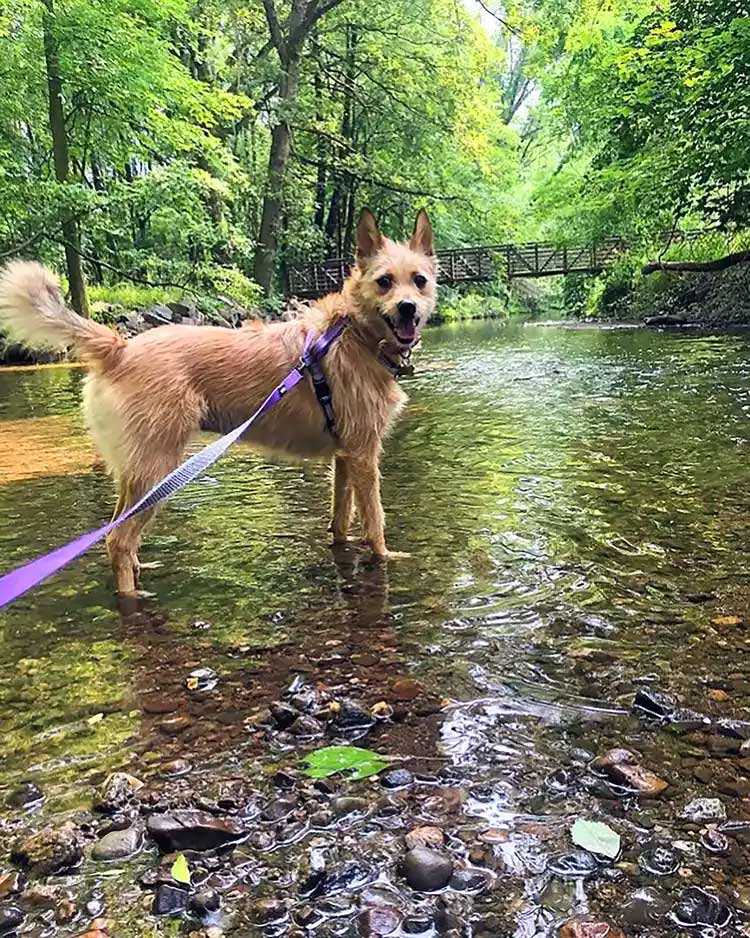
Because podengos often work in packs, they can share a home with other dogs their own size. But use caution when introducing a podengo to a smaller animal, like a cat, that the breed could mistake for prey.
Care
Podengos require little fuss over their fur. Smooth-coated podengos rarely shed and need only occasional brushing, while wirehaired dogs shed more often and thus need to be brushed regularly. Add in the occasional bath, regular nail trims, and daily dental care, and your podengo will be groomed to perfection.As with any dog, early socialization and training are important aspects of caring for Portuguese podengo puppies. And though these dogs are brainy and eager to please, their independent nature can make training a practice in patience. But with an experienced owner and positive training methods, a podengo can thrive.
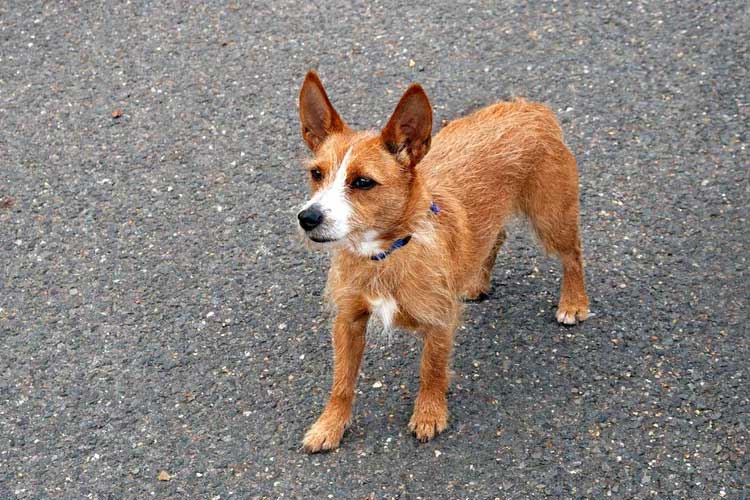
In addition to training, podengos need plenty of daily activity, preferably in ways that meet their innate breed traits. "Podengos are hunters, and as such, they are problem-solvers who excel at thinking on their feet," says Melissa McMath Hatfield, MS, CBCC-KA, CDBC, owner of Loving Dogs in Fayetteville, Ark. "They thus require lots of mental stimulation to satisfy their quick minds."
Moreover, Hatfield notes that if you're hoping for a dog who will keep your feet warm while you spend a lazy Sunday reading on the couch, the podengo—who is used to running long distances and working for hours—may not be the best fit, as he needs plenty of daily physical movement, as well.
For the perfect blend of mental and physical stimulation, Hatfield recommends lure coursing, a sport in which dogs chase a mechanized lure (meant to imitate live prey) around a course. "Coursing would be an ideal outlet for both the dog and the owner," she explains. "It allows the dog to practice his innate behavior of chasing down his quarry but in a safe and controlled environment."

Without proper outlets for their energy, Portuguese podengos can become bored and frustrated. And bored, frustrated podengos can develop unwanted behaviors like chewing or excessive barking, Hatfield says. She advises potential podengo owners to have a plan for how they're going to keep their dog active before adding one to their family. If lure coursing isn't an option, you can reach out to your veterinarian for other ideas or for the contact information of a local, fear-free certified dog trainer who can help brainstorm other breed-appropriate activities.
Health
The Portuguese podengo tends to be a very healthy breed, and all sizes can live up to 15 years. However, the Portuguese Podengo Pequenos Club of America recommends that breeders screen their dogs for the following conditions:Hip dysplasia: Canine hip dysplasia occurs when a dog's hip joint develops abnormally, resulting in a loose, unstable joint. This malformation can lead to permanent joint damage and to the development of osteoarthritis.
Patellar luxation: This is a hereditary condition in which the dog's patella, or knee cap, moves out of its normal groove within the femur when the knee is flexed. It's one of the most common causes of lameness in dogs.
Eye problems: A veterinary ophthalmologist will be able to check for signs of eye disorders including glaucoma, cataracts, and progressive retinal atrophy.
History
With a history that spans more than 2,000 years, the PPCA calls the Portuguese podengo one of the oldest dog breeds in the world. It's thought that podengos are descendants of dogs who were brought to the Iberian Peninsula by the Phoenicians and Romans to serve as hunting companions, and those that excelled in Portugal's climate and terrain were selected over the next two millennia.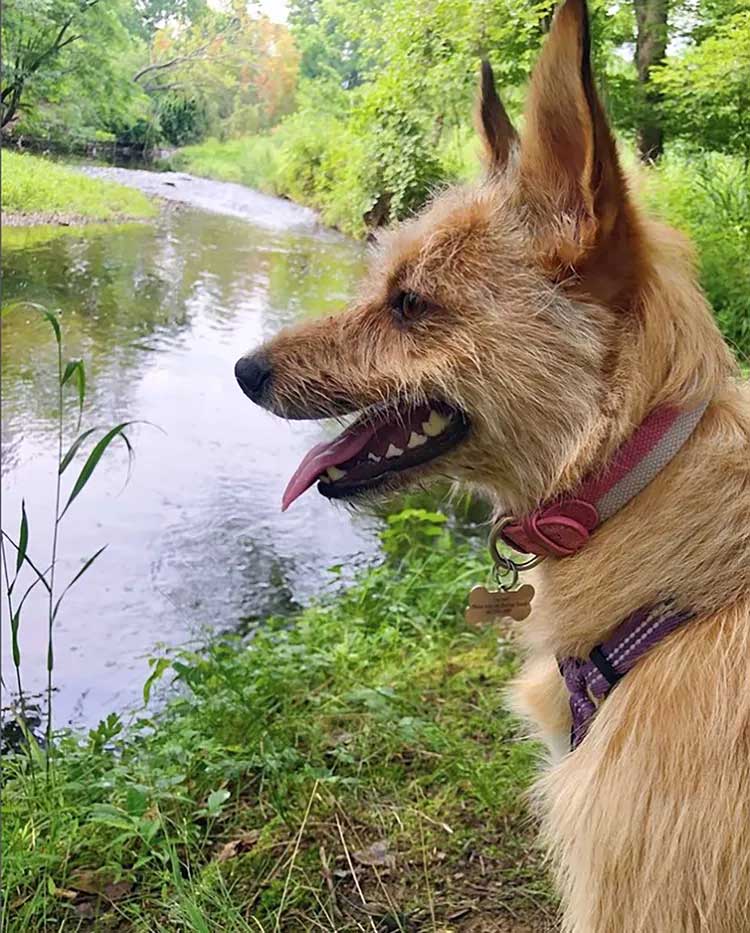
Over the years, three different sizes emerged to serve various needs. The podengo grande was developed to aid in hunting deer and wild boar. Primarily a dog of the nobility, the grande is now the rarest size in Portugal as interest in boar hunting has waned.
The podengo medio and the podengo pequeno, on the other hand, were developed for rabbit hunting. Historically associated with the peasantry, the PPCA says that the medio and the pequeno were expected to find, flush, capture, and retrieve their prey in Portugal's harsh, craggy terrain.
The Portuguese podengo remains a popular hunting dog in Portugal (almost all podengos hunt, even show dogs), but those in the United States are more likely to tackle toys than live prey. But the PPCA considers this severing of the connection between the breed and its original purpose to be the greatest threat to podengos in the U.S. and desires to see more dogs placed with hunters.
Fun Facts
Podengos are sometimes called Portuguese warren hounds. A warren is a network of connected rabbit burrows, so this name refers to their rabbit-hunting vocation.Speaking of name meanings, according to the PPCA, the word "podengo" goes back to at least the 1500s in Portugal when it was used to refer to pack-hunting dogs. Over time, the term came to refer specifically to the ancient prick-eared dogs brought to the Iberian Peninsula by the Romans and Phoenicians.
The American Kennel Club (AKC) designated the pequeno as a separate breed from the medio and grande in 2008. However, several groups (including the PPCA) and countries (Portugal included) consider all three sizes to be the same breed.
Portugal has 10 national dog breeds, but the podengo has the distinct honor of being the symbol of the Portuguese Kennel Club.